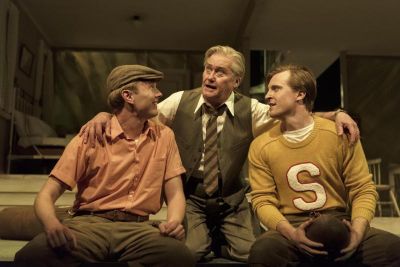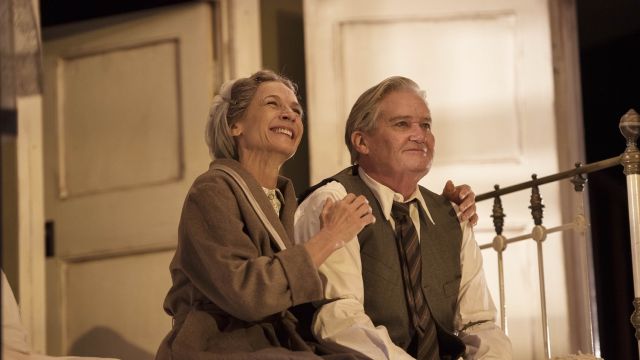Death of a Salesman
Audiences have been recognising themselves in Arthur Miller’s Death of a Salesman for the past 70 years. A Pulitzer Prize winner and widely regarded as one of the greatest plays of the 20th century, Willy Loman’s travelling salesman still resonates in the IT age in this wonderful production by Jason Klarwein.
It’s 1949 and Willy is going under. The competition is too tough for his mediocre talents, his sons have been disappointments, and he’s run out of work-friends who’ll give him a break. Like his brother, he needs a gold-strike in Alaska, but that ship has sailed long ago. His mantra, that as long as you’re well-liked you can find a place in the sun, is not working this time and when he gets fired even Willy can’t put a positive spin on it. The lies, the posturing, and the self delusion have come to an end. His wife Linda can’t help. She’s realised long ago she hitched her wagon to the wrong guy: she’s devoted to him, and she won’t hurt him, but she knows the inevitability of what will happen.
An exemplary cast do Miller proud in a production that has pace, resonance, and heart. Peter Kowitz’s Willy stands grandly above all in his slightly crumpled three-piece suit, a patriarch with bluster, pride, and vulnerability. It was a rich and satisfying performance of a controlling but broken man.

Opposite him as Linda, Angie Milliken gave as good as she got, being assertive with Willy when he was raging and calling out her sons when they mistreated their father. She ruled the household with a quiet strength.
Thomas Larkin played Biff with a restless adolescent streak, whilst Jackson McGovern as Happy, had the right swagger for a skirt-chaser.
In the smaller roles, Kevin Hides brought presence to Uncle Ben, Charles Allen had tons of empathy as Charley, with Ilai Swindells’s Bernard a master of understatement, especially in his and Willy’s late pivotal scene.
Richard Roberts’ set-design of a frame-house with sliding facia-boards reeked of upstate New York, with Verity Hampson’s lighting and Justin Harrison’s music and sound design, moody, expressive, and filmic.
It was a great play, a great cast, and a great night of theatre.
Peter Pinne
Subscribe to our E-Newsletter, buy our latest print edition or find a Performing Arts book at Book Nook.

